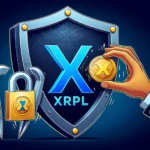As blockchain enthusiasts eagerly await the turnaround of the market in 2024, it's crucial to stay informed about the available XRPL wallets. In this guide, we'll delve into three XRPL-native wallets—Xumm, Crossmark, and GemWallet—along with some non-native options. Let's explore the differences between them and understand how they cater to the needs of the XRPL community.
XRPL-Native Wallets: Your Gateway to the XRPL Ecosystem
- Xumm (Soon to be Xaman) Wallet:
- Key Features:
- xApps: Empowering both developers and users to create collaborative applications known as xApps.
- Point-of-Sale (POS): Focused on facilitating real-world payments, emphasizing a mobile-first approach.
- Xumm Pro: Offers additional features like profile creation and access to fiat on-boarding services.
- Key Features:
- Crossmark Wallet:
- Key Features:
- AMM Integration: Already supporting the DevNet AMM with Mainnet approval pending.
- Bulk TX Signing: Allows one-click bulk signing for various transactions, such as minting multiple NFTs.
- API/SDK: Supports integration with existing applications and is compatible with XRPL sidechains.
- Key Features:
- GemWallet:
- Key Features:
- Ease-of-Use: Prioritizes a simple user experience for both users and developers.
- Open-Source: Encourages community involvement by making its code transparent.
- Decentralization: Operates without a backend or middleware, ensuring direct interaction with the blockchain ledger.
- Key Features:
Other Notable Wallets: Expanding XRPL Compatibility
Beyond XRPL-native wallets, there are non-native options compatible with XRPL:
- Bitfrost: A versatile multichain DeFi wallet.
- Ledger: A prominent hardware wallet manufacturer.
- Gatehub: A token issuer with a platform for XRPL interaction.
- Trust Wallet: A well-established wallet supporting over 70 blockchain networks.
- Edge: Known for its user-friendly features, including username/password backup and PIN code login.
While XRPL-native wallets are recommended for active participants in the ecosystem, those primarily engaged in other blockchain ecosystems may find it more convenient to connect their existing wallets for XRPL testing.
Charting Your Path in 2024
As blockchain activity gains momentum in 2024, XRPL wallets will continue to evolve and mature. This guide serves as a valuable resource for anyone looking to navigate the XRPL ecosystem through these wallets. Whether you're a seasoned XRPL enthusiast or a newcomer, these wallets offer a range of features to cater to your needs. Stay tuned for further updates as we journey through the dynamic world of XRPL in the coming year.
If you're interested in building on the XRPL and want to learn more about the process, don't hesitate to book a call and explore exciting opportunities in this thriving ecosystem.


